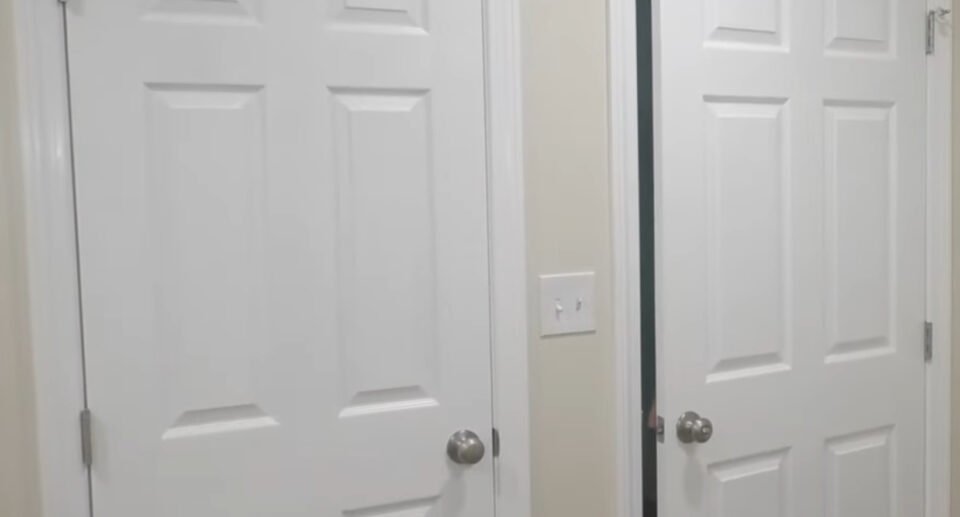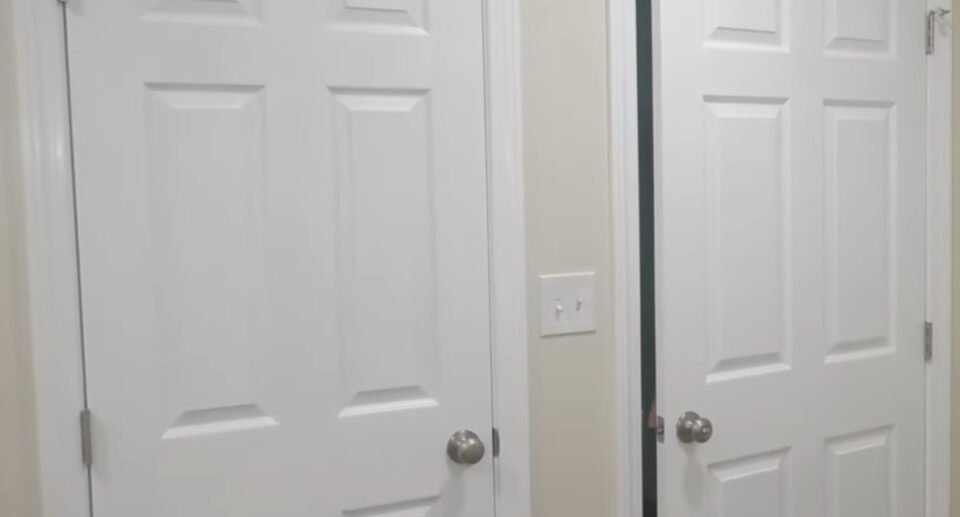What is a Right Hand Door? The Ultimate Guide

A right hand door is a door that swings to the right when opened. If the hinges are on the right side of the door and the doorknob is on the left side, the door is a right hand door. The handing of a door refers to the direction in which it swings when opened. The functionality of a right hand door is determined by the location of the hinges and the doorknob.
It is important to determine the handing of a door before purchasing it. Make sure that the door is compatible with the door frame and the room layout.
The functionality of a door can be reversed by flipping the door over or changing the location of the hinges and the doorknob.
Understanding Door Handing
Right Hand vs Left Hand
When it comes to door handing, it is essential to understand the difference between right-hand and left-hand doors.
A right-hand door is one that has its hinges on the right side, and the door swings towards the person opening it. On the other hand, a left-hand door has its hinges on the left side, and the door swings towards the person opening it.
To determine whether a door is right-handed or left-handed, stand outside the door and observe the direction in which the door swings.
If the door swings towards you, it is an inswing door. If it swings away from you, it is an outswing door. If your right hand is closest to the doorknob, it is a right-handed door. If your left hand is closest to the doorknob, it is a left-handed door.
Determining Door Swing Direction
To determine the swing direction of a door, stand outside the closed door with your back turned toward the hinge side of the door frame. Grab the door handle with one hand without reaching across your body. Turn to face the door while still holding the knob and open the door.
If the door swings towards you, it is an inswing door, and if it swings away from you, it is an outswing door.
Make sure to determine the door swing direction and handing before purchasing a new door or door hardware. This will ensure that you select the correct handing and avoid any unnecessary installation issues.
Installation and Hardware
Installing Door Hinges
When installing a right-hand door, make sure to pay attention to the location and orientation of the door hinges.
The hinges should be installed on the right side of the door frame for a right-hand door, and on the left side for a left-hand door.
It is also important to ensure that the hinges are installed at the correct height and depth to ensure a proper fit.
The number of hinges required for a right-hand door depends on the size and weight of the door.
Typically, a standard interior door requires two hinges, while a heavier exterior door may require three or more hinges.
Make sure to choose hinges that are strong enough to support the weight of the door and made of durable materials that can withstand regular use.
Selecting the Right Hardware
Selecting the right hardware for a right-hand door is crucial to ensure proper function and security.
The hardware includes the doorknob, lockset, and other accessories such as door stops and kick plates.
When selecting hardware for a right-hand door, make sure to consider the material of the door and the style of the hardware.
For example, a modern door may require sleek and minimalist hardware, while a traditional door may require ornate and decorative hardware.
It is also important to consider the level of security required for the door.
A right-hand exterior door may require a deadbolt lockset for added security, while an interior door may only require a simple doorknob.
Safety and Regulations
Building Codes and Compliance
When it comes to building codes and regulations, it is important to note that the installation of doors must comply with the local regulations.
These regulations are in place to ensure that the doors are installed correctly and safely.
For example, the International Building Code (IBC) requires that all doors must swing in the direction of egress.
This means that a right-hand door must swing inward if it is the only exit from a room or building.
Additionally, the IBC requires that doors must have a minimum clear width of 32 inches and a minimum clear height of 80 inches.
Make sure to ensure that the right-hand door you choose complies with these regulations to ensure the safety of the occupants of the building.
Security Considerations
Security is another important consideration when it comes to choosing the right-hand door.
Inward-swinging doors are generally considered to be more secure than outward-swinging doors. This is because the hinges of inward-swinging doors are located on the secure side of the door, making them more difficult to tamper with or remove.
However, it is important to note that the security of a door also depends on the quality of the door itself and the locking mechanism.
Make sure to choose a high-quality door with a secure locking mechanism to ensure the safety and security of the occupants of the building.
Design and Preference
When it comes to designing a home, the orientation and functionality of doors play an essential role in ensuring that spaces are functional, accessible, and aesthetically pleasing.
Homeowners often have preferences for the type of doors they want in their homes, which can affect the design and traffic flow of a space.
Aesthetic and Functional Design
The design of a door can have a significant impact on the overall look and feel of a room.
Interior doors can be designed to blend in with the surrounding walls or stand out as a statement piece.
Homeowners may choose to have doors with glass panels, which can allow natural light to flow into a room and create an open and airy feel. The size and shape of a door can also affect the aesthetic design of a space.
In addition to the aesthetic design, the functionality of a door is equally important.
The orientation of a door can affect the traffic flow of a space, and homeowners may want to consider the placement of furniture and other obstructions when choosing the direction of a door swing.
The type of door can also affect the soundproofing and insulation of a room.
Homeowner Preferences
Homeowners may have preferences for the type of doors they want in their homes.
Some may prefer outward swinging doors, which can provide more space inside a room and prevent the door from obstructing traffic flow.
Others may prefer inward swinging doors, which can offer more security and protection from the elements.
When it comes to determining whether a door is right-hand or left-hand, homeowners may have different preferences.
Some may prefer left-hand reverse doors, which open towards the left when standing outside the room. Others may prefer right-hand reverse doors, which open towards the right when standing outside the room.
Ultimately, the preference for door orientation will depend on the homeowner’s individual needs and preferences.
In the case of entry doors, homeowners may want to consider the orientation of the door based on the layout of their home and the direction of incoming traffic.
Conclusion
In conclusion, a right-hand door is a door that swings inward towards the room with the hinges located on the right side of the door when viewed from the outside. It is the most common type of door found in homes.
When determining the swing of a door, it is important to consider the location of the doorknob and the direction in which the door swings.
If the doorknob is on the right side and the door swings into the room, it is a right-hand inswing door. On the other hand, if the door swings away from the room, it is an outswing door.
It is worth noting that the terminology used to describe door swings can be confusing, especially when ordering doors. It is recommended to order doors in person and provide a drawing that shows the door hinge and swing direction from above.
Understanding the difference between right-hand and left-hand doors is important for anyone involved in construction or renovations. By studying the basics of door swings, homeowners and builders can ensure that they choose the right type of door for their needs.

Hello, I’m Keith Jones. I’m the author and head of content here of door and window guide. I’ve been in the window and door industry for over 10 years in the UK and North America. I’ve had quite a few roles during my career mainly in Worldwide sales. I’m now semi retired so I thought I’d put my knowledge to good use educating people about all they might need to know about door and window related topics.






